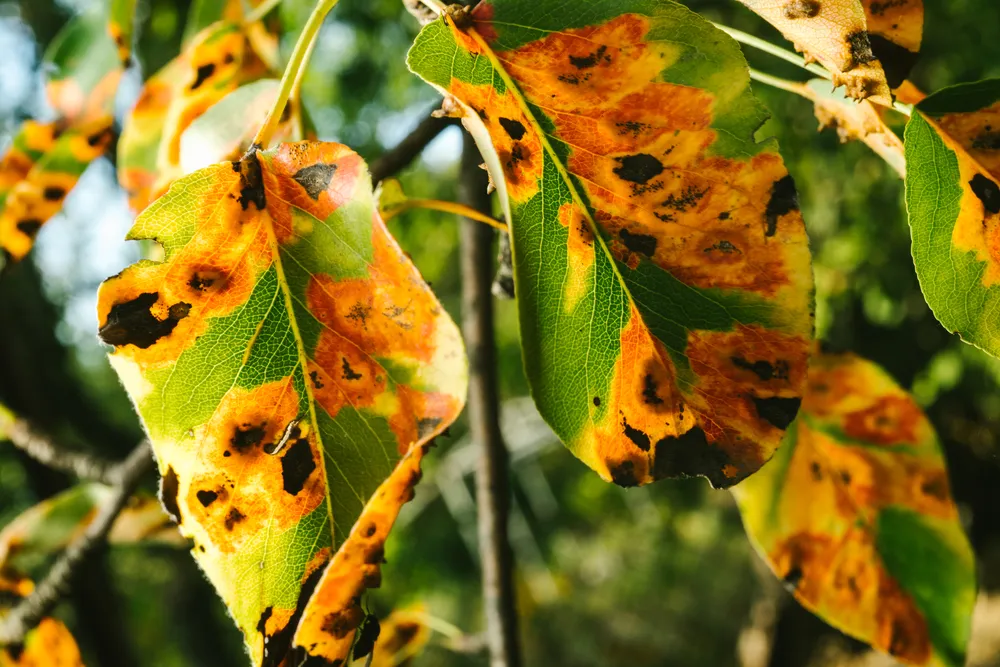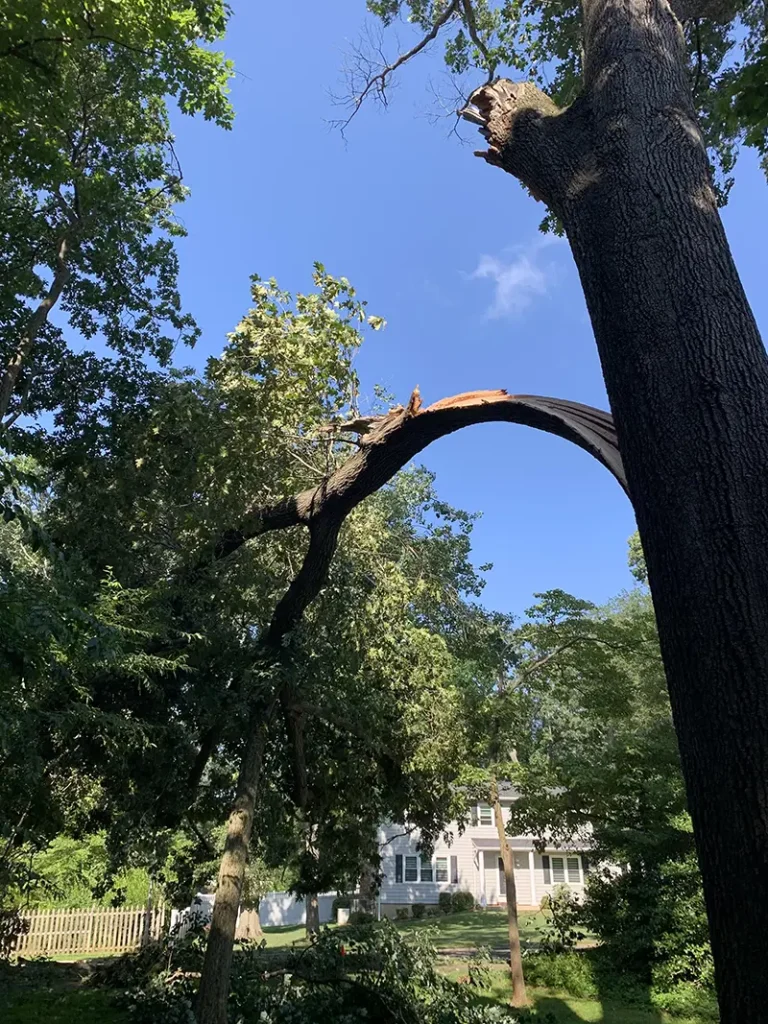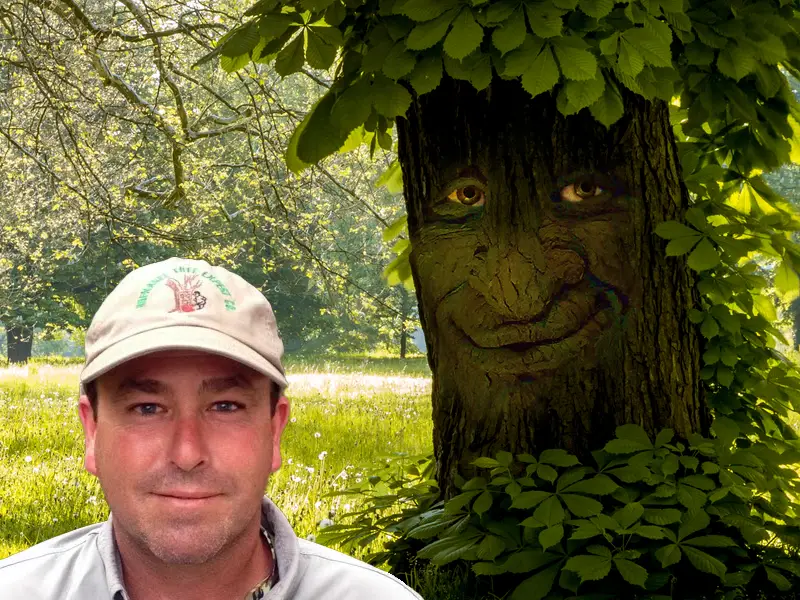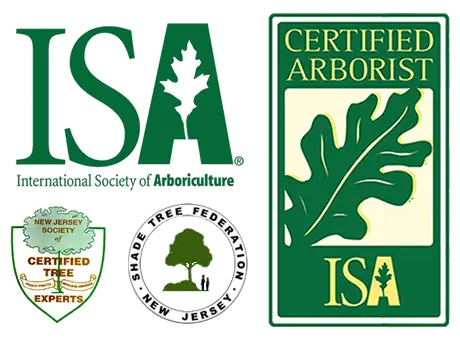How To Identify & Fix Hidden Tree Dangers Caused By Summer Weather
In the charming coastal town of Long Branch, NJ, summer brings warm ocean breezes, stunning beach views, and the potential for powerful summer storms.

Amidst the beauty of this seaside paradise, it’s essential to be aware of the hidden dangers that summer weather can pose to the trees that grace our landscapes. As professional arborists at Hufnagel Tree Service, we are dedicated to preserving the natural beauty and safety of the trees in Long Branch. In this comprehensive guide, we’ll explore the impact of excess moisture on trees, the weight of water-saturated limbs, and essential summer tree care tips to ensure your trees thrive and withstand the challenges of the season.
A Live Look At Monmouth Beach
Hidden Danger: Coastal Climate and Tree Health
Long Branch’s unique coastal climate plays a significant role in the well-being of its trees. The proximity to the ocean moderates temperatures, but it also means higher humidity levels and an increased potential for saltwater exposure during storms. While most trees can adapt well to these conditions, they can still face challenges, especially during the hot and humid summer months.
Hidden Danger: Excess Moisture and Root Health
Long Branch often experiences periods of heavy rain during summer storms. While trees need water, excessive moisture can lead to waterlogged soil, which affects the health of their root systems. Sandy soil, typical of coastal areas, drains well, but during extended wet periods, it can retain more water than necessary. Waterlogged soil deprives tree roots of oxygen, leading to root suffocation and root rot. A weakened root system can compromise the tree’s stability, making it vulnerable to uprooting during strong winds.
Hidden Danger: Weight of Water-Saturated Limbs and Branches
Summer storms bring much-needed rain, but the leaves of trees act like sponges, absorbing water. When rain is followed by high humidity, this water may linger on the leaves, increasing their weight significantly. The added weight can cause limbs and branches to bend, droop, or even snap off under pressure. Falling branches pose potential dangers to property, pedestrians, and vehicles below.

Identifying Tree Distress
Vigilance is key to ensuring your trees remain healthy and safe during the summer. Look out for these signs of hidden tree distress:
- Leaning Trees: Trees that suddenly lean or appear to have shifted may indicate root damage or instability.
- Yellowing or Wilting Leaves: Leaves that turn yellow or wilt, especially during or after heavy rain, may indicate root issues or excessive water uptake.
- Drooping or Broken Branches: Branches that sag, droop, or show visible signs of damage may be at risk of breaking and should be inspected by an arborist.
- Fungal Growth: Mushrooms or fungi growing on the tree’s trunk or at the base can indicate decay and internal problems.
- Cracks and Splits: Deep cracks or splits in the trunk could signify internal decay or structural weakness.

Essential Summer Tree Care Tips for Long Branch, NJ
To protect your trees from the potential dangers of summer weather, consider the following tree care tips tailored to Long Branch’s coastal climate:
- Regular Pruning: Schedule routine tree pruning by a certified arborist to remove weak or damaged branches and promote proper tree structure. Pruning also improves airflow, reducing the risk of fungal diseases.
- Mulching: Apply a layer of organic mulch around the base of your trees, taking care to keep it away from the trunk. Mulch helps regulate soil moisture, suppresses weeds, and insulates roots from temperature fluctuations.
- Saltwater Exposure: During storms, saltwater may reach trees close to the coast. Rinse your trees with fresh water after a storm to reduce the salt’s impact on foliage and roots.
- Tree Inspection: Arrange for a comprehensive tree inspection by a professional arborist to identify hidden issues and provide appropriate treatments.
- Water Management: Properly manage irrigation and drainage systems to avoid overwatering and waterlogging of the soil.
- Lightning Protection: Considering lightning protection systems for large, valuable trees can minimize the risk of lightning strikes during summer storms.
- Tree Support and Cabling: Install support systems like cables and braces for trees with weak branches or narrow crotches to prevent breakage during storms.
Get A Quote
Trees In New Jersey That Struggle In Summer
While most trees in Monmouth County, NJ, are adapted to the local climate, there are some tree species that may not perform as well during the hot and humid summer months. These trees might struggle with the high temperatures, excessive humidity, and potential waterlogged soil. Here’s a detailed list of tree species found in Monmouth County, NJ, that may not thrive in the summer:
- Red Maple (Acer rubrum): While Red Maples are native to the area and generally hardy, they can suffer from heat stress and are susceptible to leaf scorch during hot summers.
- Eastern Hemlock (Tsuga canadensis): Eastern Hemlocks prefer cooler and more shaded environments. Hot and dry summers can lead to drought stress and increased vulnerability to pest infestations like the Hemlock Woolly Adelgid.
- American Beech (Fagus grandifolia): American Beech trees may struggle in prolonged heat and high humidity, which can lead to leaf drop and increased susceptibility to diseases.
- Pin Oak (Quercus palustris): While generally well-adapted to wetter soils, Pin Oaks may face challenges during dry summers due to their shallow root systems.
- Birch Trees (Betula species): Birch trees, especially River Birch (Betula nigra), may be sensitive to hot and dry conditions. They prefer moist soil and can suffer from leaf scorch in harsh summer weather.
- Southern Magnolia (Magnolia grandiflora): Southern Magnolias can struggle in the extreme heat of summer, and their large, glossy leaves can be prone to leaf spot diseases.
- Eastern White Pine (Pinus strobus): Eastern White Pines may not perform as well in hot and humid summers, as they prefer cooler temperatures.
- White Ash (Fraxinus americana): White Ash trees can be sensitive to prolonged drought and may experience reduced growth during hot and dry summers.
- American Elm (Ulmus americana): While once a prevalent species, American Elms are susceptible to Dutch Elm Disease and may be further stressed during hot and dry summers.
- Weeping Willow (Salix babylonica): Weeping Willows thrive in moist environments and may struggle during hot and dry summers, leading to leaf scorch and branch dieback.
- Catalpa Trees (Catalpa species): Catalpas can suffer from heat stress and may drop leaves prematurely during prolonged hot weather.
It’s important to note that while these tree species may not be ideal for Monmouth County’s summer conditions, they can still thrive with proper care and management. Regular watering, mulching, and appropriate pruning can help alleviate stress during the summer months. When selecting trees for planting, it’s best to choose native or well-adapted species that can withstand the local climate and provide long-term benefits to the ecosystem. Consulting with a local arborist or horticulturist can also provide valuable guidance in choosing the right trees for your landscape.

Only Use A Certified Arborist
As you enjoy the beauty and serenity of Long Branch, NJ, this summer, remember to care for the trees that adorn your landscape. The coastal climate, with its humidity and saltwater exposure during storms, can pose challenges to tree health. By being proactive in their care, including regular pruning, mulching, and inspections, you can safeguard your trees from hidden dangers and ensure they thrive throughout the season. For professional tree care and expert assistance tailored to Long Branch’s unique environment, rely on Hufnagel Tree Service. Whether it’s pruning and trimming, tree removal, risk prevention, or emergency services, our team of professionals is dedicated to providing exceptional and reliable solutions to each and every customer. By prioritizing regular tree care, you can maintain a vibrant landscape, enhance your property value, and ensure the safety of your home and loved ones. Together, let’s protect and nurture the green treasures that enrich our coastal community’s natural splendor. Stay safe and embrace the shade and beauty of your well-maintained trees in Long Branch, NJ!
Call Now To Schedule Service

